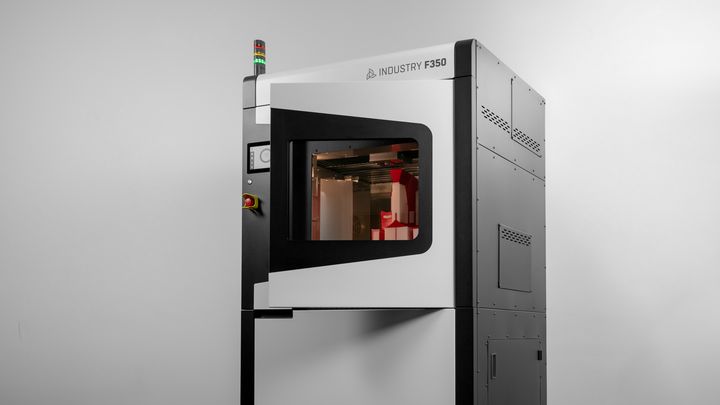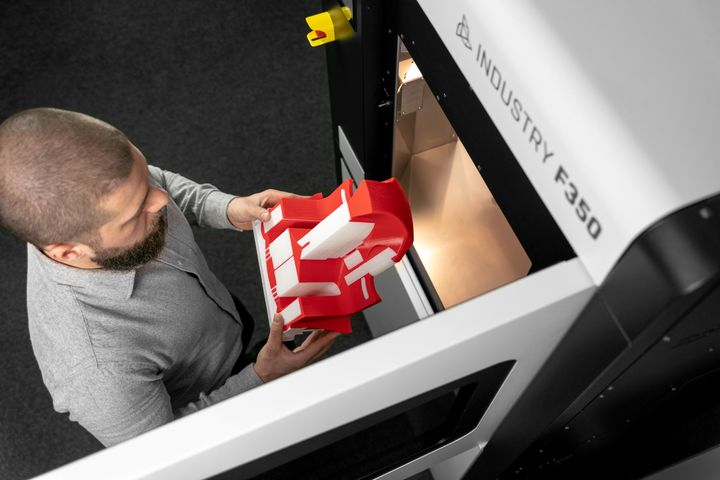3DGence announced a new industrial 3D printer for their INDUSTRY line, the F350.

The 3DGence F350 production 3D printer
Previously the company launched the F340 and F420. The new F350 seems to fit in-between the previous two models, as you might suspect. However, unlike most “mid models”, it isn’t just about a build volume that fits in-between. 3DGence has implemented an interesting combination of thermal capabilities as well.
Each of the three INDUSTRY models uses the FFF process with 1.75mm filament. They all sport dual extrusion by means of swappable modules, which offer the ability to very quickly put in place hardware that’s optimized for specific materials. These modules can be interchangeably used on each of the machines.
All machines in the INDUSTRY line include actively heated build chambers and hot ends that can hit a sizzling 500C. All machines include filament storage that’s also heated. With all those common characteristics, how do these machines differ, and how does the new F350 fit into the lineup? Let’s look at some specifics.
- The build volumes are the most prominent difference, but not the sole difference. The F340’s build volume is 260 × 300 × 340 mm; the F350’s build volume is a larger 340 x 340 x 350 mm; and the F420’s is a massive 380 x 380 x 420 mm.
- The build chambers are all actively heated, but there is a difference in their maximum temperature. The F340 goes up to 85C, the F350 can hit 130C, while the flagship F420 can hit 180C. The F420 offers the highest temperature capability.
- The F340’s filament storage unit is heated to 70C, whereas the F350 and F420’s is only 50C.
- The new F350 offers similar functionality to the F340 and F420, but with a mid-sized build chamber.

Operating the 3DGence F350 production 3D printer
You’ll note that each of these machines, including the new F350, have rather high temperatures for nozzles and chamber. This enables the machines to 3D print a very wide array of possible materials. 3DGence describes the possibilities:
“Materials available on the INDUSTRY F350 immediately are PEEK, PA6, PA-CF, PC, ABS, ASA and PLA. New materials like Victrex AM200, PEKK-CF, PC-CF, PC-ABS are coming.”
The second benefit of the F350’s thermal system is that it allows the device to produce parts in a highly reliable manner. By heating the input filament as well as the enclosed build chamber, they can fully control the thermal environment exposed to the thermoplastic material. This produces the same conditions on each print job, resulting in consistent prints from job to job. That’s the hallmark of a production machine.
And of course, the extreme heat means these materials won’t be exhibiting any warp as would occur on 3D printers with lesser thermal systems. One bit of advice for users of the F350: if you’re 3D printing in PLA, don’t set the build chamber temperature to 160C.
For more info on the 3DGence INDUSTRY F350, please click below.







Leave A Comment